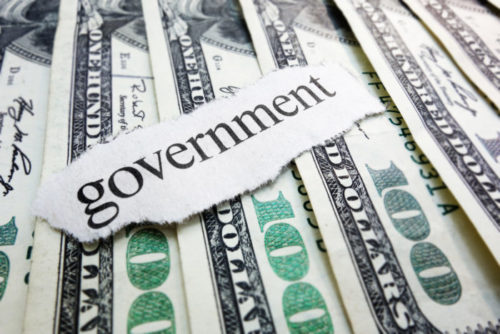When you create a monthly budget, you must take into account your household income and expenses. All household members must agree on this budget and work together to ensure they stay on track. While the federal budget process is much more complicated than a household budget, it attempts to achieve the same goals as a household budget.
Congress members must agree on where federal money is spent and the expenses that will be addressed by the budget. Each year, the government plans its spending and creates the federal budget. Learning about the federal budget process makes it easier to understand who’s involved and how the budget is created.
Table of Contents
Who Makes the Budget for the US?
Congress and its members must agree on the federal budget each year. This ensures U.S. citizens are represented by their respective representatives when the budget is created. The U.S. Constitution grants Congress the power to create the budget but over the years, many agencies have been developed to help keep checks and balances in place.
The Congressional Budget Office was designed to assist Congress in creating the federal budget. It provides extensive research and information on the current government debt and deficit, as well as other issues the budget may need to address.
Before the Budget
Each year, Congress goes through the appropriations process to organize and plan the federal budget. Appropriations bills are created to allocate funding to different programs and agencies. These agencies and programs are designed to address issues that are important to U.S. citizens, such as funding for the welfare program and other financial assistance programs.
When appropriation bills are agreed upon in Congress, they go into law through legislation called authorization bills. Authorization bills may be in effect for several years and they’re also generally passed for mandatory federal spending, such as the interest on the national debt or Medicare benefits.
Creating the Budget
To successfully create a federal budget and impose legislation that executes spending properly, there are many steps in the process.
The President Submits a Budget Request
The fiscal year begins on October 1 every year. The president submits a budget request to Congress in February to ensure there’s enough time to agree on a budget before the beginning of the fiscal year.
The president takes federal agencies and programs into consideration when developing a budget request. Programs that require mandatory funding and agencies that need additional funding are outlined in the request. However, this request is just a starting point for negotiations within Congress.
The House and Senate Pass Budget Resolutions
Both the House and Senate Committees on Budget review the president’s budget request and suggest additional resolutions or changes to the request. There are two different drafts of the budget so both sides of Congress must eventually join together and agree on one budget proposal.
At this point, the budget request includes input from the president and Congress but it isn’t official yet. While spending limits for federal agencies are outlined in this draft of the federal budget, specific amounts for programs aren’t agreed upon. Members of the House and Senate meet together over differences and compromise on amounts for agencies, taxes, and funding cuts. Once one version of the budget is created by the House and Senate, it’s voted on by Congress again.
House and Senate Subcommittees “Markup” Appropriations Bills
To allocate spending on different programs, the budget goes to the both the House and Senate appropriations committees. Members of Congress also meet in 12 smaller subcommittees to address specific issues and programs, such as potentially funding universal healthcare or addressing energy and water concerns.
These committees work on setting spending limits while staying within budget. When appropriations bills are satisfactory for all committees, the edited budget is sent back to the House and Senate.
The House and Senate Vote on Appropriations Bills
The House and Senate consider all appropriations bills that are included from the 12 subcommittees. There may still be two different versions of some of these bills if the House and Senate don’t agree on the specifics. If this is the case, a conference committee meets to create a compromise on the two different versions of these bills. The edited version of the bill is again presented to the House and Senate for a vote.
The President Signs Each Appropriations Bill Into Law
When Congress agrees on the appropriations bills, they’re presented to the president. If the president agrees on each of the 12 appropriations bills, they’re signed into law and the budget is complete.
What Is the Main Goal in Creating the Federal Budget?
While the federal budget process seems complicated and arduous, it’s necessary to ensure all opinions within Congress are heard and taken into consideration. The goal of the budget is to ensure all mandatory expenses are covered and that important programs receive the funding they need in order to continue serving U.S. citizens.
By establishing subcommittees and several steps in the federal budget process, it’s more likely that the final version will address important issues fairly. While mandatory spending, such as interest on the national debt, must be addressed, programs, such as disability assistance, must also be funded properly so they can continue to function. The budget also ensures that new legislation, such as the Affordable Care Act (ACA), receives the funding needed to be implemented correctly.
Complications Surrounding the Creation of the Federal Budget
Not only is the federal budget process complicated, it’s also tough for the House, Sentate, and president to agree on how to allocate federal money each year. There are many issues that can make creating the federal budget challenging, including:
- Differing views on the importance of certain programs.
- The influence of lobbyists and campaign contributors.
- The current state of the economy, including national debt and interest rates.
- Politics within different political parties.
The federal budget is important because it ensures that the country focuses on programs to help U.S. citizens and keep the economy thriving. The federal budget process encourages several drafts and changes before it’s approved and implemented for the year.
While this process is complicated and time consuming, it’s important to ensure all members of Congress and the president feel confident in the budget’s ability to provide funding to important programs and address mandatory expenses.
Image Source: https://depositphotos.com/





